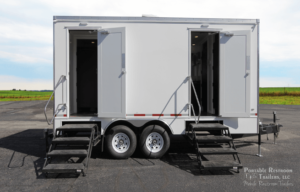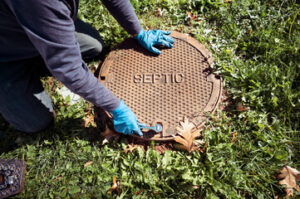Formazione Aziendale are training sessions that improve the skills and knowledge of employees interactively and engagingly. These intensive sessions can be used to teach anything from customer service strategies to leadership skills.

Many workshops also focus on improving communication and presentation skills. This helps employees to empathize with their colleagues, share ideas effectively, and keep stakeholders aligned.
Strengths Finder is one of the most popular team building workshops. It is based on the popular Gallup-certified assessment and helps participants understand their unique strengths and talents. This approach is very different from other assessments, such as DiSC, which focuses on describing what is wrong with teammates. Strengths Finder highlights what is right with each other and leads to better engagement and stronger collaboration.
The Strengths Finder assessment is comprised of 177 paired statements that measure and score talents, thinking patterns, feelings, and behaviors. Once the assessment is complete, participants receive a personalized report that describes their top talent themes. These are the natural recurring patterns of thoughts, emotions, and behavior that describe how they function at their best.
In addition to helping participants identify their strengths, the Strengths Finder workshop teaches them how to use those talents in the workplace. It also explains how different strengths can complement each other and build stronger teams.
As a result, employees can tailor their career goals and development plans to maximize their innate talents. They can also find fulfillment in their roles and increase job satisfaction. In addition, if team leaders are aware of their individual strengths, they can pair them with complementary leadership styles to strengthen the overall effectiveness of the team.
As an added benefit, a Strengths Finder workshop can help a team recognize their weaknesses as well. This will help them develop a plan to improve those areas that may not be as strong. It can also teach them how to navigate being overly reliant on their strengths and how to develop new skills that may be lacking. This is an important step in reducing conflict and improving performance.
Inner Child Workout
In order for businesses to thrive, they must constantly push past their comfort zone. Inner child work isn’t easy, and it can be an incredibly emotional process for entrepreneurs to go through. But it’s essential for business growth, as childhood wounds can skew one’s self-image and inhibit their ability to connect with others.
Inner child healing exercises help individuals reconnect with their inner “child.” These exercises often involve writing, drawing, and other creative activities, as well as journaling or expressing oneself through music. These activities encourage people to tap into their natural sense of joy and spontaneity. They can also lead to greater emotional resilience, allowing them to better cope with life’s challenges and setbacks.
This type of therapeutic approach is especially sensitive to trauma, catering to individuals who have suffered from childhood abuse or neglect. It integrates theories like attachment theory and somatic therapies, highlighting how childhood experiences affect an individual’s present feelings and behaviors.
Inner child healing teaches individuals to prioritize self-compassion and self-care by acknowledging their core needs, feelings, and vulnerabilities. These exercises can help them heal their unresolved emotional wounds, allowing them to live more authentically and experience a deeper sense of self-love and acceptance. They can also learn to offer compassion to their inner child, embracing them with warmth and understanding. They can also cultivate a healing routine for their inner child, including daily practices like self-soothing techniques and positive affirmations. They can also practice forgiveness, both for themselves and for others who contributed to their inner child’s pain. This is a key step in the healing process, as it can prevent re-traumatization and other negative effects. Finally, they can learn to recognize the root causes of their impulsive behaviors and develop strategies for stopping them.
Know Your Purpose Workshop
Whether you’re working with a new team or redefining the purpose of your brand, a Know Your Purpose Workshop is the perfect way to get everyone on board. The workshop focuses on the key components that make up a strong purpose statement and provides participants with a toolkit for creating their own. It’s also worth mentioning that a clear purpose can help with everything from guiding decision-making to boosting employee morale.
At the start of the workshop, the first thing you’ll want to do is have a check-in session with your attendees. This will give you a sense of what kind of energy they’re bringing to the day and allow them to share their excitement about the session. It’ll also let you know if anyone is feeling anxious or has any personal concerns that you might need to address.
In addition, it’s important to ask them what they hope to achieve from the workshop. This will help guide the discussion and ensure that the final purpose statement is aligned with their objectives. For example, if your company’s goal is to increase sales, you may want to emphasize that your purpose is “to connect people with the products and services they need.”
Finally, it’s essential to involve subject matter experts in this process. Their insights will help enrich the discussions and provide valuable mentorship opportunities. It’s also helpful to seek out enthusiastic participants, as their positive attitude can influence the overall dynamic of the group.
Once the workshop is over, it’s time to finalize all of the notes and purpose statement drafts into a master document. This should be done as soon as possible, while the information is still fresh in everyone’s mind. Then, you can share the finalized statement with your attendees so that they can keep it close to heart and use it in their everyday work.
Emotional Intelligence Lab
Emotional intelligence (EI) is the ability to monitor and discern your own feelings and those of others. It includes the ability to manage your emotions, control negative thoughts, and read other people’s body language. EI can impact your work and personal life, as well as your health and relationships.
While Peter Salovey of Yale University and John Mayer of the University of New Hampshire were among the first to recognize and document emotional intelligence as a distinct set of skills, their research did not gain much traction outside of academia until Daniel Goleman took an interest in it while researching for an article at The New York Times. His 1995 bestselling book, Emotional Intelligence: Why it Matters More Than IQ, brought the subject out of academia and into the general public. Since then, businesses have taken a greater interest in EI and have implemented training programs that teach its key competencies.
The Mood Meter app, designed to help users increase their awareness of their own and other people’s emotions, is based on decades of research conducted by the Yale Center for Emotional Intelligence. Founded by Goleman and his colleagues, the center continues to conduct research and provide educational materials about EI.
The Yale Center for Emotional Intelligence also offers the RULER Institute to train district-level and school-based teams to implement systemic approaches to social-emotional learning (SEL). Schools that successfully implement a RULER approach experience significant student academic achievement gains and improved teacher performance. SEL also helps students develop the skills to navigate adversity, build healthy relationships, and become more resilient individuals. This, in turn, improves their overall quality of life. This is a significant benefit for any company that seeks to foster a healthy workplace environment.
Sustainability and Corporate Social Responsibility Workshop
Whether it’s developing a specific skill or building team cohesion, corporate workshops provide an opportunity to learn and grow in a supportive environment. The key to successful workshops is to clearly define the goals for both leadership and employees. Then, the workshop selection can be based on those objectives. It’s also important to find the right facilitator. A good one will have deep expertise in the workshop topic and content, as well as experience designing and leading workshops specifically. He or she should be able to keep participants engaged through interactive methods and demonstrate skills in keeping everyone engaged throughout the workshop.
Increasingly, companies are being required to address social and environmental issues, as investor, consumer, and employee expectations evolve. This requires a change in corporate culture, and workshops can help lead the way. These sessions explore sustainability frameworks, and examine how to integrate them into existing business strategies. They may include guest speakers, case studies, or hands-on activities, as well.
These sessions are tailored to empower customer-facing teams, such as sales, with advanced strategies and tools to engage customers in a meaningful, positive, and productive way. Using simulated scenarios, these workshops teach active listening skills and how to respond appropriately to meet client needs.
These workshops are designed to raise awareness of the challenges faced by underrepresented groups within the workforce and foster a more inclusive, diverse culture. They may include discussion of topics such as implicit bias, microaggressions, and how to be an ally. These workshops also often incorporate collaborative group activities to build team relationships and improve communication. They can also explore hiring practices, mentorship programs, and other ways to promote diversity and inclusion within the workplace.







